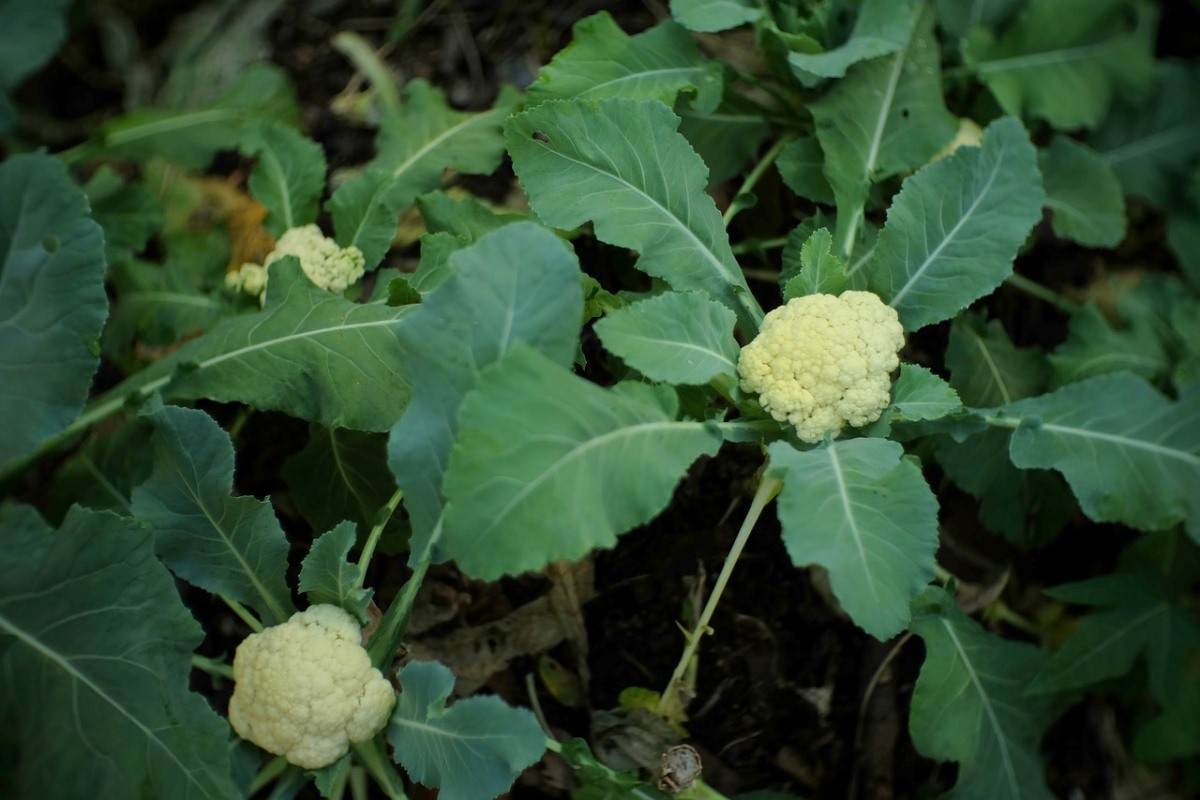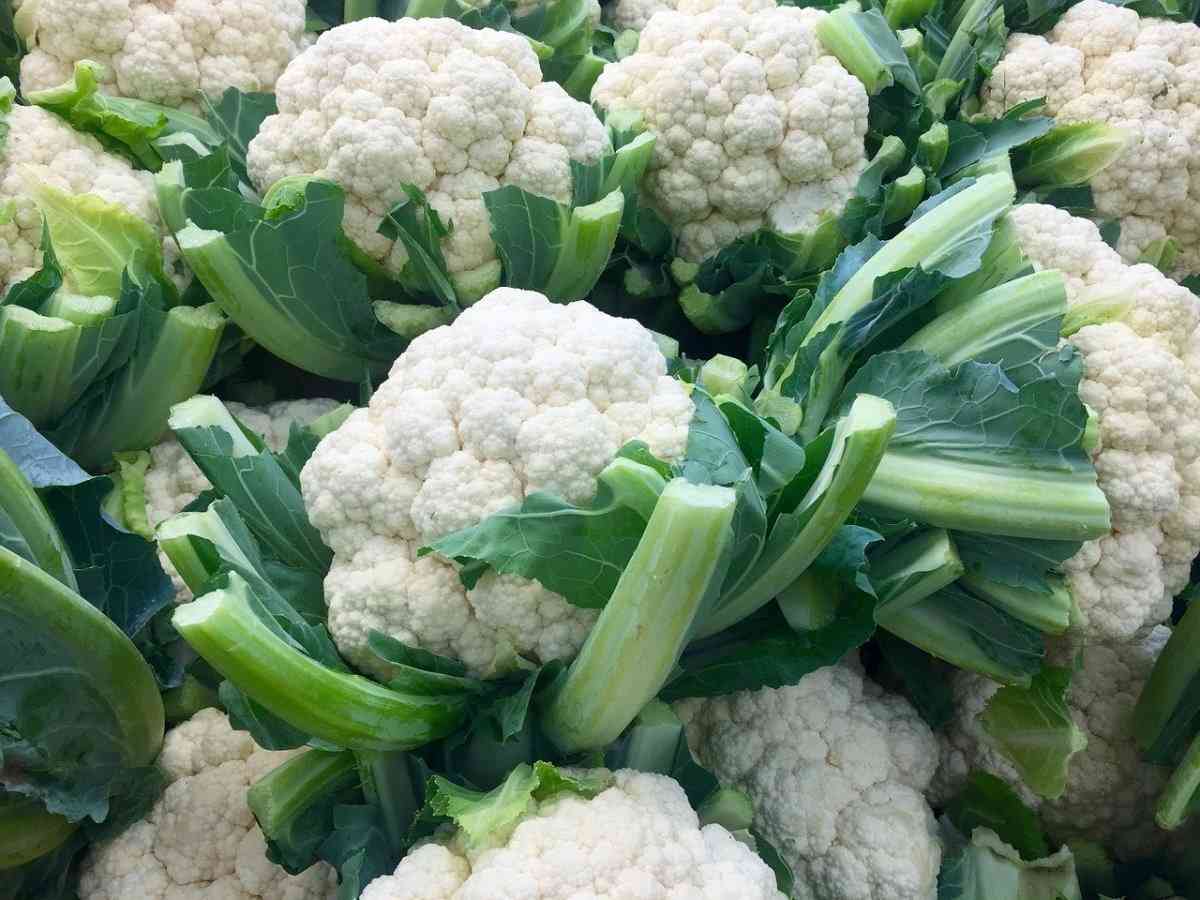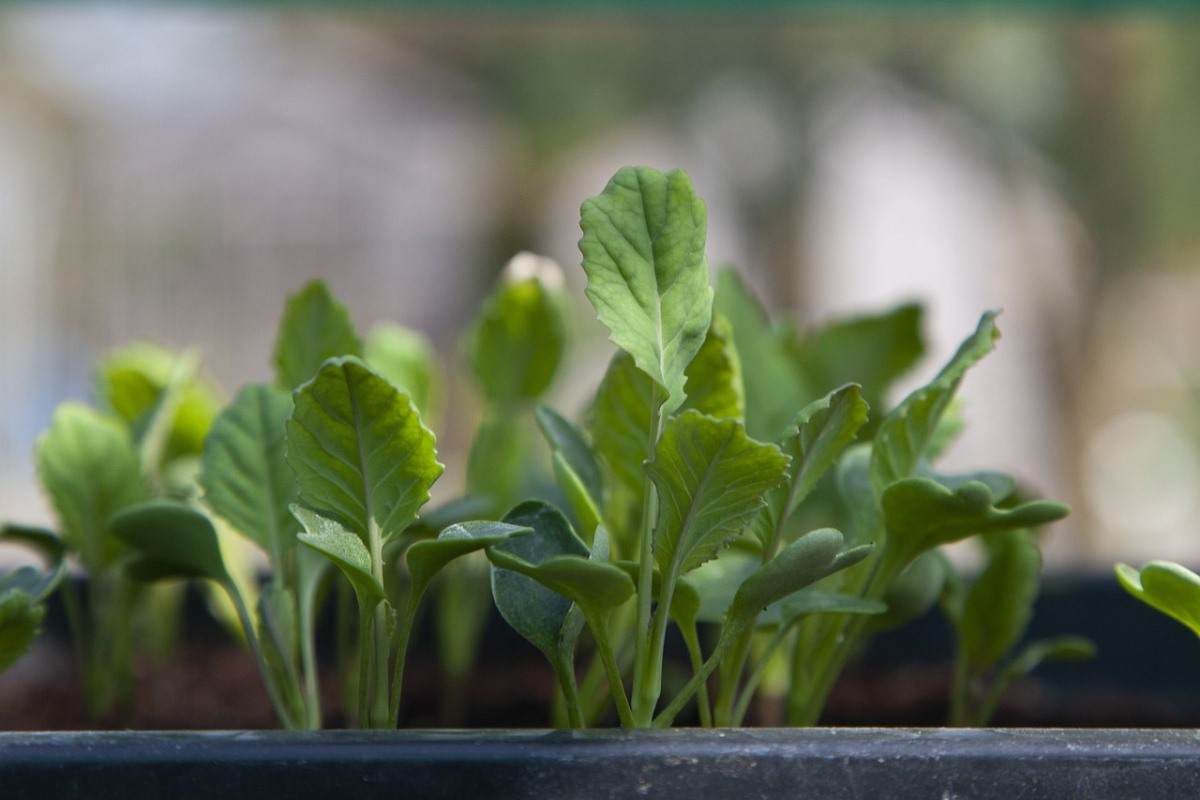Introduction to Cauliflower Questions and Answers, Planting FAQs: Hello everyone, we are here with another helpful article today. Do you want to have your own cauliflower plant and do you have any doubts about planting cauliflower? Then follow this article. In this article, we are going to discuss some frequently asked questions about cauliflower planting.
Cauliflower is one of several vegetables that belong to the species Brassica oleracea in the genus Brassica, which is in the Brassicaceae family. It is an annual plant that is usually reproduced by seed.
The Overview Table Of Cauliflower Is Given Below:
| Botanical Name | Brassica oleracea (Botrytis group) |
| Common Name | Cauliflower |
| Plant Type | Biennial and grown as an annual |
| Mature Size | 12 to 30 inches tall and even 12 to 24 inches wide |
| Sun Exposure | Full Sun |
| Soil Type | Rich and well-draining |
| Soil pH | 6.0 to 7.0 |
| Bloom Time | Spring and fall |
| Flower Color | White, orange, purple, and even green |
Cauliflower Questions and Answers, Cauliflower Quiz, Cauliflower Frequently Asked Questions

Cauliflower is an excellent cool-season veggie from the Brassicaceae family, which includes broccoli, and even cauliflower is usually referred to as ‘heading broccoli.’ Unlike broccoli, however, which produces multiple side shoots, the cauliflower plant only produces a single head which means you have one chance to get it only one time.
Now, let us discuss some frequently asked questions about cauliflower planting
Where is the best suitable place to plant cauliflower?
Cauliflower usually likes to grow in full sun and rich, moist and well-drained soil with a pH between 6 and 7. You need to till the soil to loosen it to a depth of 12 to 15 inches. Then, work in a 3-inch layer of nutrient-rich compost or even garden soil.
How can I grow a cauliflower plant?
You need to plant cauliflower in rows with each plant spaced 18 inches apart. Rows need to be 30 inches apart. Then, improve your native soil by mixing in several inches of compost or even other rich organic matter. After that, add a 3-inch layer of mulch and give the plants 1 to 1.5 inches of water weekly.
What can I plant next to the cauliflower plant?
Beans, Celery, and Onions are all excellent choices when companion planting cauliflower. Beans and Cauliflower is an ideal combo while growing.
Other veggies that are recommended for companion planting with cauliflower are given below:
- Beets
- Broccoli
- Brussels sprouts
- Chard
- Spinach
- Cucumber
- Corn
- Radish
Does the cauliflower plant regrow after cutting?
Your cauliflower plant will continue to grow even after you cut off the head from it. To maintain your plant, you need to give it 1 to 1.5 inches or 2.5 to 3.8 cm of water once a week. Harvest cauliflower florets as they grow.
In case if you miss this: Cucumber Seed Germination.

What is the best fertilizer for growing cauliflower?
For best growth, you need to side-dress the plants with a high-nitrogen fertilizer 3 to 4 weeks after transplanting. Note that the cauliflower will start out as a loose head and then that it takes time for the head to fully form. Many varieties take at least 75 to 85 days from transplant to grow.
Why is my cauliflower plant growing weird?
If there are any inconsistencies in the cauliflower’s environment, such as extreme cold, heat, or even drought, can result in malformation of the head, or curd, of the vegetable. To specifically answer the question of why you have loose heads on your cauliflower, very hot weather is most likely to blame.
Do cauliflower-like coffee grounds or not?
Cauliflower usually needs very fertile soil and plenty of nitrogen. You can do this by providing your cauliflower bed with lots of high-nitrogen compost that means well-rotted and made with lots of coffee grounds or even some manure and giving it a higher-nitrogen organic fertilizer once or twice during its complete life.
How much space does cauliflower need to grow?
Like all plants, cauliflower seedlings start out very small but can grow quite large at maturity, often measuring 2 feet across. You need to space them 18 to 24 inches apart in the row gives them plenty of room to grow, and allowing 36 inches between the rows provides ample space for cultivation, weeding, fertilizing, and even harvesting.
How can I protect cauliflower plants?
Remedy – Protect the cauliflower plants from birds by covering them with netting or fleece. Scarecrows and even bird-scaring mechanisms work for a while, but the most reliable method of protection is to cover plants with horticultural fleece or even mesh.
Why is my cauliflower plant dying?
Stress – Cauliflower is a very cool weather plant susceptible to wilting in hot weather. However, you need to avoid overwatering because soggy and poorly drained soil may also cause cauliflower to wilt. A layer of bark chips or even other mulch will help keep the soil cool and moist on hot days.
What is the best time to plant cauliflower?
The best time to plant most varieties of cauliflower is in the spring so they grow and even produce their flower heads before summer’s hot temperatures ramp up. Other varieties of cauliflower plants are suited for mid-summer planting for a fall harvest.
How long does it take to grow a cauliflower plant?
Harvesting – Most cauliflower varieties require nearly about two months to mature, although some are a little quicker, and others can easily take up to three months. Since they will not form heads in very warm weather and they can handle only a light frost, so be sure to choose a variety that will have enough time to mature in your climate.
How often should I need to water cauliflower?
You need to water regularly with 2 inches of water each week and even with normal rainfall, this usually requires supplemental watering. For best growth, better side-dress the plants with a high-nitrogen fertilizer 3 to 4 weeks after transplanting.
How can I protect cauliflower from bugs?
Better use non-toxic safe methods for treating bugs in the cauliflower to preserve the plant and retain its safety for eating. In addition to diatomaceous earth, horticultural oils, and even soaps, and handpicking, the natural bacteria Bacillus thuringiensis is very good to control.
What is the best fertilizer for growing cauliflower?
Nitrogen-rich fertilizer is usually needed to encourage leaf growth, and cauliflower is a very heavy feeder. You need to add generous amounts of nitrogen-rich fertilizer to your soil before planting begins. Although cauliflower is a very heavy feeder, over-fertilizing can also lead to hollow stems.
Can I grow cauliflower in winter?
Winter or even more accurately overwintering cauliflowers are sown in the open ground on a well-prepared seedbed from April to May. You need to sow the seed in 25mm deep drills, watering along the drills using a watering can containing liquid seaweed will help the germination seeds grow.
Why is my cauliflower plant not growing ahead?
Cauliflower growing problems:
If you have no head on your cauliflower, then it’s undoubtedly stress affecting the plant. Stresses that affect cauliflower development may be over very cold soil or air temperatures in the spring, lack of irrigation or nutrition, root-bound plants, and insect or even disease damage.
Can I grow cauliflower in a bucket?
Any type of container will work, but you need to be sure it has at least one good drainage hole in the bottom, as your cauliflower plants will rot very quickly in soggy soil. For growing cauliflower in containers, the plants usually need a loose, lightweight potting mix that holds moisture and nutrients but drains well.
Why my cauliflower plants’ leaves are turning yellow?
Stress – Cauliflower is a very cool weather plant susceptible to wilting in hot weather. It tends to affect plants that are nearing maturity in late summer and even early autumn. Verticillium wilt affects primarily the lower leaves, which wilt and then turn yellow.
What is cauliflower blanching?
Blanching is the very simple practice of binding large outer leaves together over and even around developing cauliflower heads; this is done to prevent them from yellowing or browning and developing a bitter flavor due to an overabundance of sun exposure. Some older white varieties of cauliflower can even turn shades of blotchy purple.
What is the suitable temperature to grow cauliflower?
Cauliflower grows best during sunny days with air temperatures of 21°C. If temperatures are above 26°C, during curd formation, then leaves may form in the head, it may become rough in texture, or even have a purple or green coloration.
What type of soil is best for growing cauliflower?
- Grow cauliflower in well-drained yet moisture-retentive and fertile soil with a pH of 6.0 to 7.0
- It is not worth growing cauliflower unless the plants absorb water and even nutrients steadily during their growth
- You need to improve your soil by adding well-rotted manure or even compost in spring or fall
How can I prepare the soil for cauliflower?
Keep the soil moist so the seeds will not dry out. While the seedlings are growing, then you need to choose a sunny spot in the garden and prepare the planting area very well by digging in Yates dynamic lifter soil improver and Plant Fertilizer.
Why the heads of my cauliflower plant are very small?
Cauliflower likes very cool growing conditions and quite high humidity. They need deep rich soil and they must be kept well watered throughout the season. Any check-in their growing cycle will always result in tiny heads and even a frustrated gardener.
How long does it take for cauliflower to mature completely?
Cauliflower usually takes nearly about 80 days before it is ready to harvest. When the head of the plant is about 3 inches in diameter, then tie outer leaves together with twine or a rubber band. This is called blanching, and it also protects the head from the sun.
How can I kill aphids on cauliflower plants?
Once the pests have infested your cauliflower, and other cool-season plants, then here’s how to get rid of them: you need to soak in a tub of water. Right after harvest, drop the whole head in a tub of water for 20 minutes or so. Then swish it around to release the insects.
How can I take care of a cauliflower plant?
Like most vegetables, cauliflower also needs at least 6 hours of full sun each day, and even more, is better. It also needs fertile, well-drained, and even moist soil with plenty of rich organic matter. The soil pH should be between 6.5 and 6.8 for optimum and ideal growth and to discourage clubroot disease.
How can I grow the best cauliflower?
You may also check this: Okra Planting Questions And Answers.

- Sow seeds of cauliflower in the month of July
- Plant seed shallowly, one-fourth to one-half inch deep, by dropping three seeds every 18 inches
- You need to keep the soil moist during seedling emergence
- Once the plants emerge, then thinning should be done to 1 healthy seedling
Does cauliflower need full sun to grow?
Cauliflower likes to grow in full sun and even rich, moist, well-drained soil with a pH between 6 and 7. You need to till the soil to loosen it to a depth of 12 to 15 inches.
How can I grow cauliflower on a balcony?
You need to choose a pot having at least 12 inches in diameter and even 16 to 18 inches across. Then fill the pot with potting soil, leaving 1/2 inch of space at the top. After that, place four seeds in the center of the pot and then lightly cover the seeds with soil.
Can I grow cauliflower in a greenhouse?
Yes, you can grow cauliflower in the greenhouse. Suitable soil for growing cauliflower in Greenhouse – start with very rich and moisture-retaining soil. For a very good and best cauliflower plant, the plant’s growth should be completely uninterrupted.
- Flower Garden Designs and Layouts for Beginners
- Planting and Spacing Techniques in Papaya: A Beginner’s Guide
- Growing Gold: Essential Techniques for Planting Pineapples
- How to Make Kalanchoe Plant Bushy: Home Remedies and Solutions
- 11 Reasons Why Your Gardenia is Not Blooming: Home Remedies and Solutions
- Eco Elegance: The Guide to Designing a Drought-Tolerant Landscape
- Gardening on a Slope: Strategies for Hillside Landscaping
- Nourish and Flourish: Top Organic Mulches for Thriving House Plants
- Everything You Want to Know about Indian Mogra Flower: Discover Uses and Growing
- Green Thumb Success: Expert Tips for Cultivating Greenhouse Pumpkins All Year Round
- Maximize Growth & Flavor: The Ultimate Guide to Companion Planting in Herb Gardens
- How to Control Rhododendron Problems Naturally: Home Remedies and Organic Ways to Fix Them
- Natural Magic: The Remarkable Benefits of Cinnamon for Plants
- Best Steps to Revive Dying Tulip with Natural and Organic Treatment
- 10 Reasons Why Your Angel Trumpet is Not Blooming: Remedies and Treatment
- How to Fix Periwinkle Leaf and Flower-Related Problems: Natural Remedies and Solutions
- How to Fix Zinnias Leaf and Flower Problems: Discover Natural and Home Remedies
- Organic Steps to Induce Lemon Tree Flowers: A Comprehensive Guide
- Bloom Booster: Crafting the Perfect Homemade Bougainvillea Fertilizer
- Optimizing Growth: A Guide to Applying NPK Fertilizer for Potted Plants
- 10 Best Homemade Fertilizers for Rubber Plant: DIY Recipes and Application Method
- How to Boost Female Pumpkin Flowers: Effective Steps for More Flowers and High Yields
- Transform Your Indoor Garden: Top Benefits of Pink Salt for Houseplants
- 10 Best Homemade Fertilizers for Peacock Plants (Calathea): Easy DIY Guide